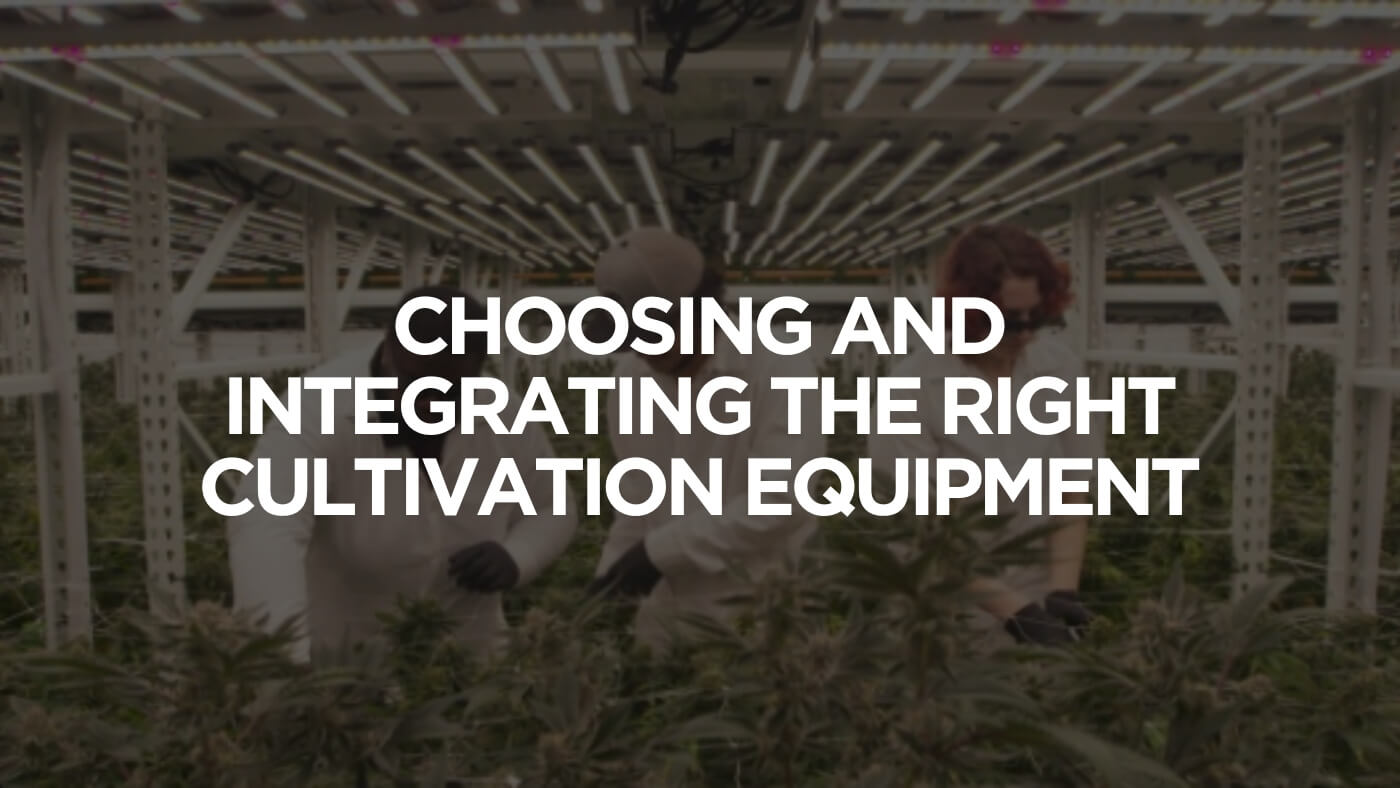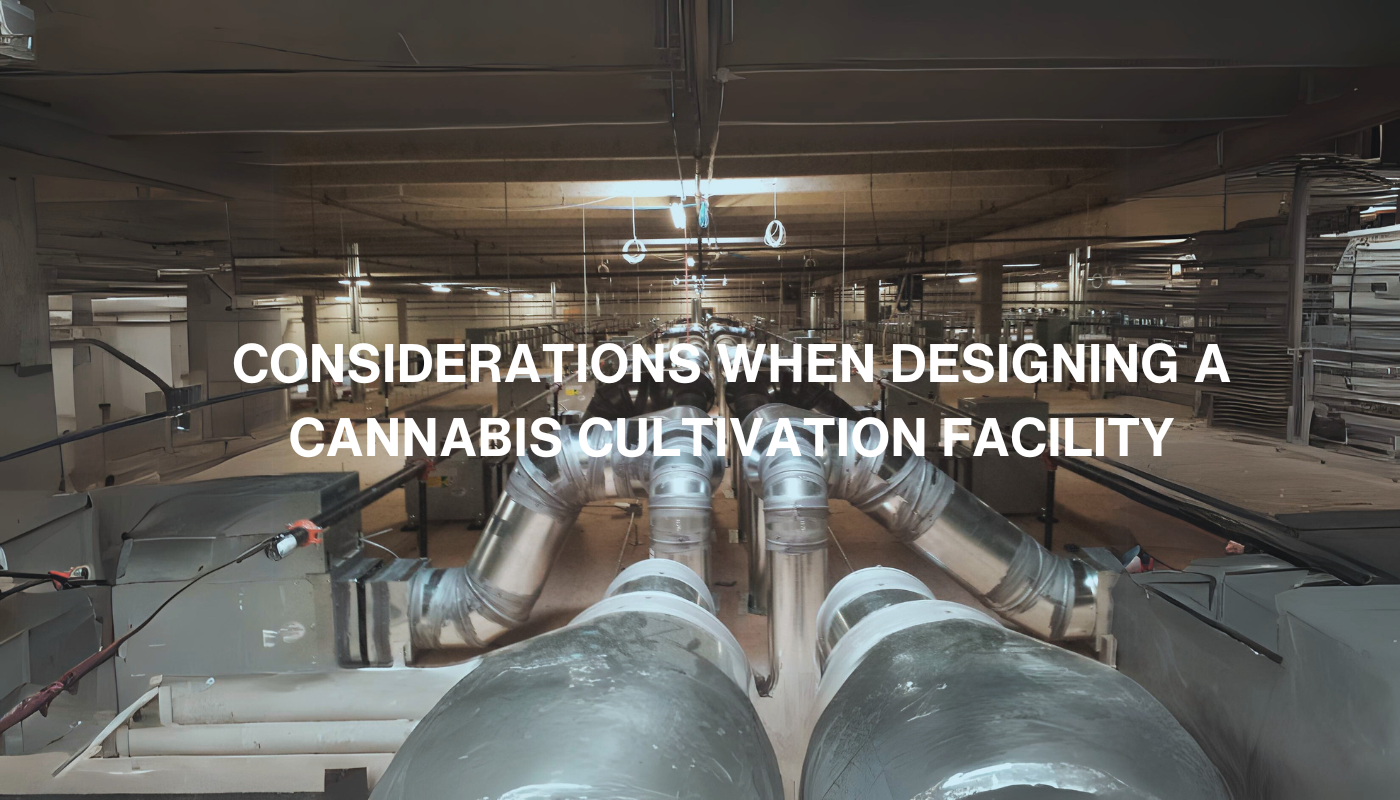
Choosing And Integrating The Right Cultivation Equipment
As the cannabis industry continues to grow, it has become increasingly necessary for cultivators to equip their operations with the essential tools for optimal growth and output. However, choosing the right cultivation equipment can be a daunting and overwhelming task, particularly if you’re new to the business.
Whether you’re a veteran grower or an entrepreneur new to the industry, having the right cultivation equipment allows you to maximize your yield and produce top-quality cannabis that meets industry standards.
In this blog, we will delve into the fundamental equipment required for cannabis cultivation, including lighting systems, irrigation systems, and ventilation equipment. We’ll also provide valuable insights and recommendations on selecting the appropriate equipment for your farm and how to integrate them effectively. So join us and let’s pave the way toward a thriving cultivation business.
Different Types Of Cultivation Equipment
To promote growth and increase overall yield, cultivators use a comprehensive set of tools and equipment, each designed for specific purposes. Here are some of the main equipment types that are essential for successful cannabis cultivation:
Lightning Systems
Cannabis plants are photoperiodic, meaning that the duration of light exposure, as well as the intensity and type of light, play a critical role in their growth and development.
When growing indoors, farmers can choose among different types of lighting systems, such as LED, High-Pressure Sodium (HPS), and Compact Fluorescent Lights (CFL). Today, LED lights are the most popular option among cultivators, and for good reason.
Here are some reasons why LED lights are the preferred choice for cannabis cultivation:
Energy Efficiency
LED lights are known for being extremely energy-efficient, making them an ideal choice for indoor small cultivation enterprises. Compared to traditional lighting options, such as HPS or incandescent bulbs, LED lights use far less energy and produce significantly less heat. This allows cultivators to save on their electricity bills while also keeping their crops cool and reducing the risk of burning the plants.
Customizable Spectrums
One of the primary benefits of LED lights is the customized light spectrum they offer. This provides growers with full control over the intensity and duration of light exposure, mimicking the natural sunlight conditions all year round. This customization is particularly important during the flowering stage when plants require a specific spectrum to promote healthy bud development.
Longevity
Another major advantage of LED lights is their durability. Compared to traditional lighting sources, LED lighting systems have a considerably longer lifespan and require less maintenance. Thanks to this benefit, businesses can save money in the long run as they don’t need to replace their bulbs as frequently.
Environmentally Friendly
LED lights are an environmentally friendly option since they promote indoor plant growth while minimizing pollution. LED lights produce less heat, which means the growing space requires less air conditioning to stay cool. Moreover, LED lights do not have any mercury or other dangerous substances, reducing the risk of environmental contamination.
Catalyst BC experts help find the Practical Approach to Choosing the Right Grow Lights. Get in touch with us and learn more.
Drip Irrigation Systems
Choosing the right cultivation equipment includes proper irrigation techniques to ensure healthy and productive plants. One of the most popular and efficient ways to water cannabis plants is through drip irrigation systems.
Through a series of emitters attached to the centralized supply lines, drip irrigation systems provide water and nutrients straight into the root zone for plants.
Advantages Of Drip Irrigation Systems
Drip irrigation systems are one of the most efficient cultivation systems, delivering water directly to the plant’s roots and minimizing waste through evaporation.
Moreover, these systems allow precise control over water and nutrient delivery, providing sufficient amounts of resources where the plant needs it most. This minimizes the chances of over- or under-watering the plants and prevents plant disease, nutrient deficiencies, or root rot.
Setting Up A Drip Irrigation System
To install a drip irrigation system, first, you need to place the main hose along the line of cannabis plants. After that, you should attach emitters to the main water pipe, making sure to align them with the position of the cannabis plants. Following that, you should fix the pipe onto a water supply and adjust the flow rate to ensure an optimal water distribution to each plant.
Drip irrigation systems can be further automated by incorporating the right cultivation equipment such as flood floors, boom irrigation, and overhead nozzles. These cutting-edge technologies help reduce manual efforts and ensure consistent plant growth.
To Improve Cannabis Operational Optimization and achieve sustainable results, contact our team at Catalyst BC, and find out more about our services.
Ventilation Systems
Proper ventilation is one of the most crucial aspects of cultivating cannabis plants. Adequate ventilation controls temperature and humidity, prevents mold and mildew growth, and removes unpleasant odors from the environment.
Let’s take a closer look at the different types of ventilation equipment commonly used in cannabis cultivation and how to select the appropriate equipment for your growing space.
Exhaust Fans
Exhaust fans are the most common type of ventilation equipment used in cannabis cultivation. These fans remove hot and humid air from the grow space and push it outside. Exhaust fans are typically installed at the top of the grow space, taking advantage of the hot air’s natural tendency to rise.
Carbon Filters
Growing cannabis plants produces strong and pungent odors. To eliminate these unpleasant odors from the growing environment, operations must incorporate the right cultivation equipment.
Carbon filters are often used alongside exhaust fans, trapping odor molecules as air passes through them. To ensure effective filtration, it is necessary to install the carbon filters alongside the exhaust fan.
Inline Fans
Inline fans are a functional approach to ventilation, moving air through ducting to and from the grow space. Cultivators often use inline fans to bring fresh air into the grow space or extract stale air out of it. However, these fans can also be utilized to balance the humidity levels in the growing space.
Today, inline fans are available in different sizes and strengths. Catalyst BC Cannabis Startup Consulting can offer guidance on choosing the right fan based on your growth space size, environmental conditions, and the number of plants.
HVAC Systems
HVAC (Heating, Ventilation, and Air Conditioning) systems are used to regulate various cultivation factors including temperature and humidity levels in large grow spaces. These systems work by heating or cooling the air and removing excess moisture.
HVAC systems come with sensors and thermostats that continuously monitor the environmental conditions and make necessary adjustments for the ideal growing conditions.
Temperature Control Systems
Cannabis plants require specific temperature ranges for proper growth and yield. Therefore, cultivation businesses need to use the right temperature control systems. Different types of temperature control equipment include HVAC systems, air conditioners, heat pumps, and heating pipes.
Air Conditioners
Air conditioners are a crucial component in maintaining a consistent and cool temperature. These devices remove heat and moisture from the air, expelling it outside. As a result, they help maintain a healthy level of moisture and minimize humidity levels to create optimal conditions for cannabis development.
Heat Pumps
Heat pumps are used to both heat and cool the air in indoor greenhouses. They transfer the heat from one place to another, delivering proper airflow. These devices are typically employed in larger operations to maintain desired temperatures throughout the year.
Heating Pipes
Another effective solution for controlling temperature indoors is using heating pipes. These pipes work by carrying heated or chilled water, creating a balanced temperature within a large grow space.
Growing Medium
Similar to other plants, cannabis plants require a proper growing medium to support their roots and provide them with essential nutrients. As the world becomes more accepting of cannabis cultivation, farmers have more options for growing mediums.
Here, we’ll explore the three most common types of growing mediums used by professional cannabis growers: soil, coco coir, and hydroponics.
Soil
Without a doubt, soil is the most popular growing medium for cannabis crops. This all-natural resource is freely available everywhere, and since all cannabis originates from the soil, it remains the most viable option.
The ideal soil pH level for cultivating cannabis is around 6.0 and 7.0. Furthermore, it should contain nutrients like nitrogen, phosphorus, and potassium. Farmers can add a variety of soil blends such as worm castings, eggshells, and organic waste to enhance and build compost.
Coco Coir
Another common option among cannabis cultivators is coco coir. This is a soilless farming approach that resembles the appearance of peat moss. Coco coir is made from the fibrous husks of coconuts, and it’s a great alternative to soil.
Coco coir is pH-neutral, and it has excellent water retention properties. Moreover, it can be reused for multiple grows, making it an economical option compared to other goring mediums.
Hydroponics
Hydroponics is a soilless method for growing cannabis, involving a nutrient-rich water solution to develop the plants. Hydroponics systems offer many advantages such as faster growth rates, larger yields, and better control over nutrient uptake.
These properties make it a popular option among experienced growers who seek full control over their growing environment. That said, this system can be expensive and require a lot of maintenance and expertise.
Besides soil, coco coir, and hydroponics, there are several other growing mediums including vermiculite, Rockwool, oasis cubes, grow stones, and perlite. Cultivators should do thorough research, and choose the method that best suits their needs and resources, as each medium has its advantages and disadvantages.
Nutrients And Fertilizers
Cannabis plants are known for their unique resilience. However, with proper nutrient levels and fertilizers, farmers can ensure healthy growth and a bountiful yield. Cannabis requires macronutrients and micronutrients to thrive, which are available in most fertilizers.
Macronutrients
There are three primary macronutrients that cannabis plants need to grow. This includes nitrogen (N), phosphorus (P), and potassium (K). Nitrogen is essential for vegetative growth, while phosphorus and potassium are crucial for flowering and fruiting.
High-quality soil mixes usually contain most of these components. However, manufacturers may also include them in feeds made specifically for cannabis plants.
Micronutrients
The importance of micronutrients for cannabis cultivation can’t be overstated. These nutrients are crucial for various plant functions such as photosynthesis, protein synthesis, and energy storage. The essential micronutrients for cannabis plants are iron, manganese, copper, zinc, and boron.
Hydroponic Nutrients
In hydroponic cultivation, plants require the same nutrients as soil-based techniques. However, besides the mentioned macronutrients and micronutrients, amino acids and vitamins also play a vital role in ensuring the plant’s efficient growth and health in these systems. They help the plant’s immune system, improving seed germination, and ensuring proper flowering and fruiting.
Fertilizers: Organic vs. Synthetic
Organic and synthetic fertilizers are the two main types of fertilizers used in cannabis cultivation. Natural sources like compost, manure, and bone meal are utilized to create organic fertilizers. They are suitable for soil-based methods and provide a slow release of nutrients over time, making them preferable for many growers.
Synthetic fertilizers, on the other hand, are made from chemical compounds and are available in liquid or powder form. These fertilizers are more suitable for hydroponic grows and can provide a quick release of nutrients that are essential for successful cultivation.
When choosing the best nutrients and fertilizers for cannabis cultivation, it’s crucial to consider different factors including the environment in which the plants will grow, and the specific strains raised.
With years of experience helping many cultivation businesses, Catalyst BC can help create the optimal nutrition plant, ensuring a healthy harvest.
Timing Machines
Timing machines are advanced technologies that have truly revolutionized the cultivation businesses. By automating the process of turning lights on and off, they ensure that plants receive the right amount of light during each stage of growth.
Many timing machines also come equipped with features like dimming and sunrise/sunset simulation, further improving plant growth and yields.
Final Thoughts
Incorporating the right cultivation equipment is essential for the success of a cannabis business. By considering factors such as the farm’s size, budget, types of strains, and specific needs, growers can select the best equipment for their operation.
From lighting and temperature control systems to irrigation and fertilization equipment, investing in high-quality cultivation tools can improve crop yields, minimize labor costs, and increase efficiency.
Catalyst BC professional team offers a wide range of services, from consulting and facility design to equipment selection and installation. We understand the unique challenges of the cannabis industry and can provide customized solutions to help you maximize your efficiency.
Our team boasts extensive experience in choosing the right cultivation equipment and can provide support on everything from the best LED lights and irrigation systems to optimizing plant nutrition and pest management. Contact us today and Thrive Your Business with Cannabis Genetics Consulting.
Right Cultivation Equipment FAQ
What are the essential types of cultivation equipment for a cannabis business?
Depending on the size of the operation, cannabis cultivation businesses require various tools including grow lights, ventilation fans, carbon filters, nutrient solutions, watering systems, and temperature control systems. Note that there are different types of cultivation equipment, and it mainly depends on whether the cannabis is grown indoors or outdoors.
How do I choose the right grow lights for my cannabis cultivation business?
When choosing the right grow lights, light intensity is an essential factor. LED lights are energy-efficient while providing a more intense light compared to other types of grow lights. Moreover, as cannabis plants need a particular spectrum of light to grow, you should select a lighting system that has the right spectrum for the different growth phases. It’s crucial to remember that grow lights have different cover areas, so opt for a lighting system that best covers your cannabis farm’s size.
What kind of ventilation system do I need for my cannabis business?
The type of ventilation system you need for your cannabis cultivation business will depend on several factors, such as the scale of your operation, the climate in your area, and the type of equipment you use. Generally speaking, a good ventilation system should provide adequate airflow and temperature control to maintain optimal growing conditions. This may involve a combination of exhaust fans, air ducts, and air conditioning or heating units.
How should I choose the best nutrient solutions for my cannabis cultivation business?
When it comes to nutrient solutions for cannabis, it’s important to first determine your plants’ needs. Depending on the stage of growth, and the strain, your plants may require varying amounts of micronutrients and macronutrients. Note that there are a variety of nutrient systems, including organic and synthetic options. Organic nutrients are derived from natural sources while synthetic nutrients are chemical-based and provide better control over nutrient levels.



